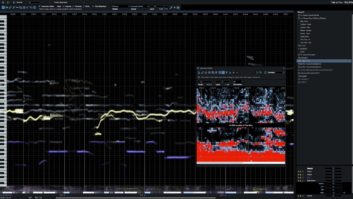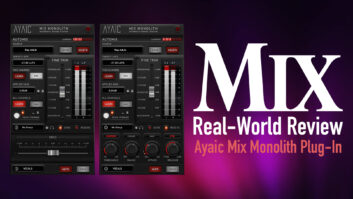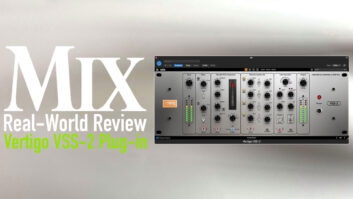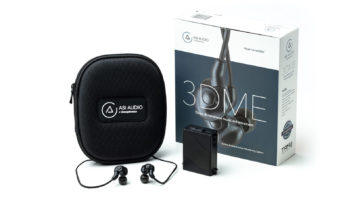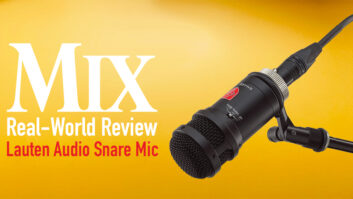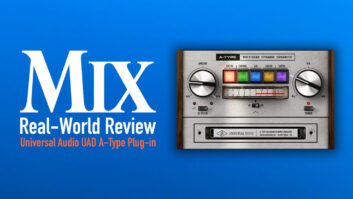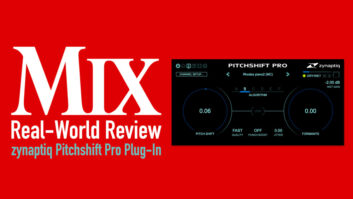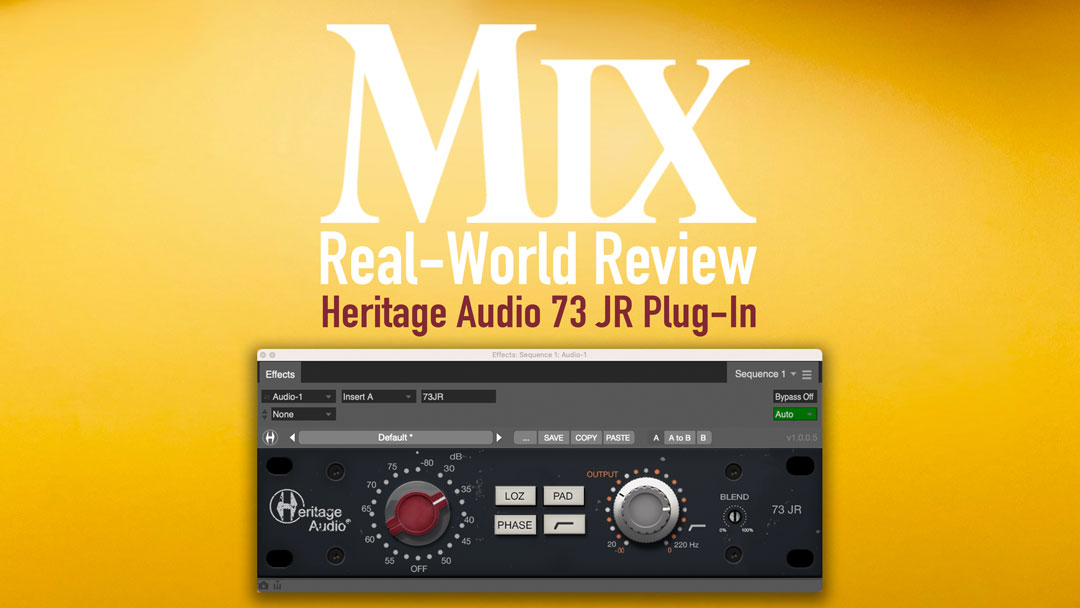
| MIX VERDICT: HERITAGE AUDIO 73 JR PLUG-IN |
| THE TAKEAWAY: “The 73 JR has the power if you have the patience.” |
| COMPANY: Heritage Audio • www.heritageaudio.com PRICE: $49; free for all 73 JR, 73 JR II and i73 PRO users PROS: • Versatile enough for channel insertion, console emulation and heavy distortion. CONS: • No metering, authentic controls and layout are less than ergonomic. |
New York, NY (October 22, 2025)—The folks at Heritage Audio take great pride in their legacy work, manufacturing authentic hardware clones of Rupert Neve’s iconic 1073 solid-state mic preamplifier.
There’s no shortage of 1073 clones today, but Heritage (along with BAE) kickstarted this movement around 15 years ago. The company now seems to be celebrating a victory lap with the new 73 JR plug-in, a careful re-creation of the 73 JR (or 73 JR II) 500 Series 1073-clone mic amps that throws in a couple of software features allowing for an expanded set of applications.
The feature set mimics that of the 73 JR hardware: that familiar big red gain knob (ranging from +30 to +80 dB in 5dB steps); a low-impedance switch (LOZ) that drops impedance from 1200 to 300 ohms and rolls off -3 dB at 12 kHz; polarity reversal (PHASE); -30 dB input attenuator (PAD); variable high-pass filter (-12 dB/octave); output attenuator (-infinity to unity gain); high-pass filter frequency (20 to 220 Hz); and a blend control (no tweaker required here in the soft-world).
Inserted on a bass/vocal/horn/drum/ percussion/guitar track—all of which are famously fantastic with 1073s—the 73 JR allows you to add some of that in-vogue Carnhill transformer smoothness, warmth, fullness and euphonic bloom we associate with 1073s. Used flat and subtly, this isn’t even grit, just some gentle, mostly even-order harmonics, a little extra detail and a pleasantly plump bottom-end. Conversely, you can kick in that HPF, dial-out excessive weight/girth, hit that gain a bit too hard, and parallel blend the result into a rather aggressive, focused and attention-grabbing track.
PSPaudioware PSP DRC — A Mix Real-World Review
All of this is executed on a track that was first amplified from low miclevel up to line level by your actual hardware preamp when recording, so you’ll have to be careful to avoid imparting color or your exploits with the 73 JR may not be as expected.
With only a small hit on your computer’s CPU, Heritage is recommending the 73 JR as a console emulation-type processor, too. Inserted as the first plug on every one of your tracks, you can dial-in a light brush of color that, when cumulative, can significantly change a mix’s timbre and feel.
To try the extreme, I actually took an instrumental mix with troublesome spiky and irritating guitar tracks and applied the 73 JR globally in a very aggressive manner per track, instead of a slew of compressors and EQs—and it worked! No, it wasn’t easy with “authentic” controls and without metering, but the 73 JR has the power if you have the patience.
Discover more great reviews—get a free Mix SmartBrief subscription!
It deserves mention that the 73 JR can be wildly abused for over-the-top distortion duties, too. The gain structure is set up for line level, so if you take off that pad and work that output control, there’s a world of delightful destruction at your fingertips. The results are quite warm and not screaming for low-pass filtering like processors that create more odd harmonics.
Feel free to mangle at will!
